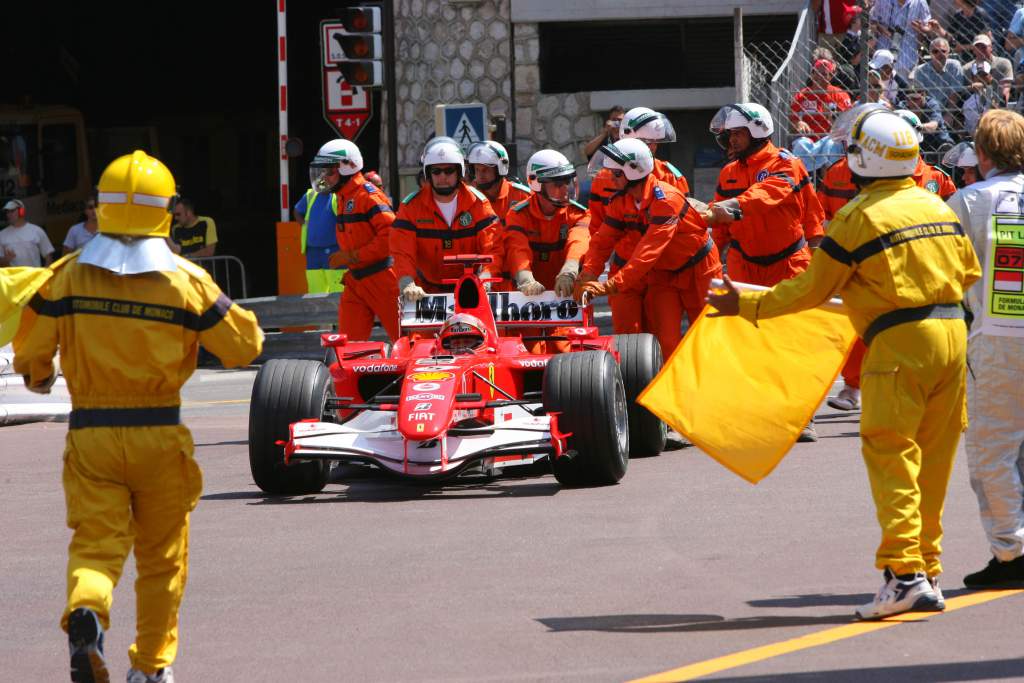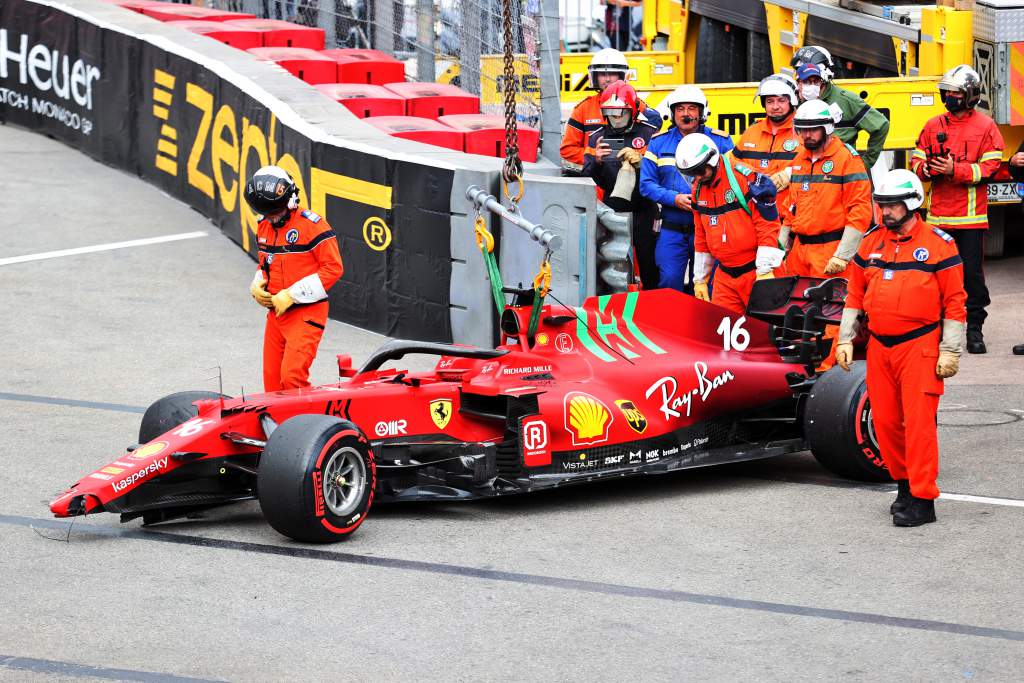Up Next

This weekend is a big one in motorsport – it’s the Monaco Grand Prix and qualifying for the Indianapolis 500. But perhaps it’s IndyCar road course qualifying that could hold greater significance for Formula 1 than the famous Brickyard race this weekend based on the happenings in Monte Carlo.
As you likely well know by now, having set the fastest time up until that point, Charles Leclerc crashed on his final qualifying run. Despite the negative of the crash damaging his car, it ensured that those behind him would have no chance to usurp him for pole.
Not your everyday pole position moment 🤯#MonacoGP 🇲🇨 #F1 pic.twitter.com/yyYPjn7Nwn
— Formula 1 (@F1) May 22, 2021
It’s not something particularly new at Monaco – you only have to look back to Michael Schumacher’s infamous crashing at Rascasse in 2006 (yes, he was later penalised for this) and more recently Nico Rosberg’s controversial lock-up and trip down the escape road at Mirabeau that brought out a yellow halting Lewis Hamilton’s bid to wrest pole from him in 2014.

In IndyCar these incidents may never have happened because of different rules.
If in the final ‘Fast Six’ shootout for pole – the same as Q3 in F1 only with four fewer cars – or indeed in any part of qualifying, a driver causes a red flag, they lose their two best timed laps from that segment and are not allowed to continue should they be able to.
IndyCar qualifying rules
8.3.4 If a car causes a red flag in any segment, the car’s best two timed laps of the segment shall be disallowed, the car may not continue in the segment, and the Car shall not advance to the next segment.
8.3.5.4 If a car causes a yellow flag that requires another car to comply with rule 7.1.3.2 (ed: slowing down for a yellow), the car’s best-timed lap to that point during that qualifications segment shall be disallowed, regardless of whether the other car complied with rule 7.1.3.2. If the car does not have a timed lap recorded when causing the yellow flag, a black flag drive-through penalty will be assessed once the lap on which the yellow flag occurred has been completed.
There’s a similar rule for yellows, whereby if you cause a yellow flag in IndyCar road course qualifying, you lose your best timed lap up until that point.
These may be strict penalties for small errors, but F1 is built on overcoming adversity, and in the process doing it better than everyone else.
Whether in this particular case this weekend Leclerc would have been beaten to pole or not had he not crashed and it had run as normal or not, he should have been penalised for costing people the chance to better their time. And it’s not only the pole fight he affected with his incident – others lost the chance to improve too.
Earlier this year it happened when Felix Rosenqvist – rebounding from a crash in first practice in his first appearance for new team Arrow McLaren SP – was set to make it through the first group of qualifying at Barber Motorsports Park in Alabama.
He was set to make the 12-car Q2 equivalent when he spun and was stuck in the gravel. Because he caused a yellow and stopped others improving, he lost that lap and therefore his chance to advance. A bit like being knocked out in Q1, effectively.
Starting way back in the pack, in the race Rosenqvist was involved in a first-lap crash (pictured below) through no fault of his own, but all of this stemmed back to his qualifying error which had impacted other drivers.

Was it harsh for Rosenqvist’s race to end this way? Sure. But he made an error and baulked his competitors. He deserved retribution – not to be in a crash obviously, but to start further down the order.
Implementing the IndyCar rule wouldn’t give the other F1 drivers in Monaco another chance at a better time, but it would penalise Leclerc from stopping them doing so. And in a broader context than just Monaco, this rule makes sense to apply to end any devious tactics and penalise a person who ruined everybody else’s qualifying.
Who knows, with this rule perhaps the drivers would be more careful. Certainly it’s been a long time since anyone lost a pole due to this rule in IndyCar street course qualifying.
It’s nice to see a relatively unexpected Ferrari pole – provided it isn’t cancelled out by damage – and I have nothing against Leclerc. It is very obvious that his crash was in no way intentional or malicious, given he’s now sweating potentially weekend-ruining consequences on his SF21.
But if he did get away with the crash, the pole is his. And the IndyCar rule would be a fairer way to police this kind of thing.
I believe drivers should be penalised for their mistakes, especially if those mistakes equal a coveted F1 pole position and stop everybody else from improving in the last part of qualifying, which is the most exciting and important part.
The spots through the midfield are so tight that this rule is equally important for those teams, too.





